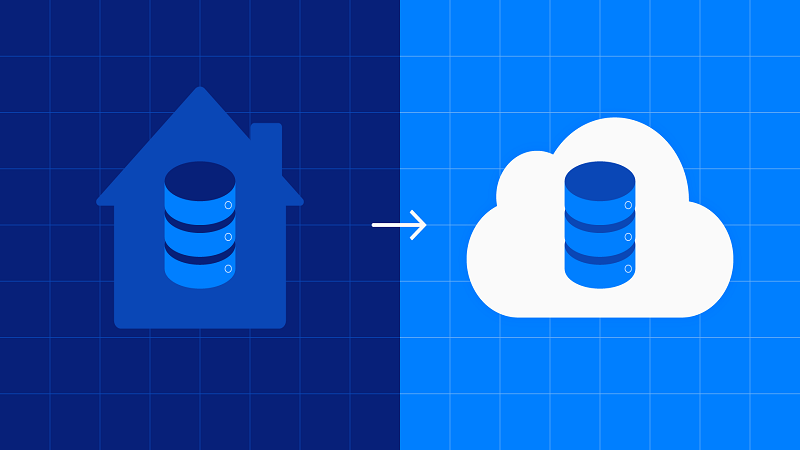
Cloud computing denotes the usage of internet-based computing. In the past, individuals would execute apps or programs using software downloaded into a physical computer or server inside their premises.
Nevertheless, cloud computing has transformed this preparation by allowing anyone to access similar apps over the internet. This strategy is acquiring popularity among medium-sized and smaller enterprises.
According to the CRN, small firms are projected to spend about $100 billion on cloud computing services by 2025. Why are numerous firms transitioning to cloud computing? Cloud computing is valuable because it can increase operational effectiveness, augment cash flow, and offer many additional advantages.
Step-by-Step Guide for Successful Data Warehouse Migration
Step 1: Plan Meticulously
Despite the rapid execution of the data transfer procedure, semantic mistakes still may arise. A comprehensive migration strategy is vital to ascertain possible risks and obstacles and delineate the necessary measures for an effective move.
Step 2: Commencement of the Project
Provide primary stakeholders, including IT executives, enterprise users, and data analysts. Ensure congruence on the project’s goals, extent, and intended results.
Explicitly delineate the movement’s objectives, such as lowering expenses, enhancing performance, or acquiring new functionalities. Analyze the possible hazards linked to the migration and formulate measures to minimize their impact.
Step 3: Valuation and Record
Familiarize yourself with the present data warehouse’s planning, data prototypes, and size. Recognize every method, app, and development that interrelates with the present data warehouse.
List a comprehensive inventory of the tools and equipment now used and assess their compatibility with the intended ecosystem.
Step 4: Data Migration
Choosing the correct method and solution for data migration is very critical. The data should be extracted from the source database.
The data should be transformed into the intended format or structure to align with the targeted system.
Step 5: Test Properly
Before completely migrating to the cloud area, start complete testing methods to ensure that each data is transferred correctly and that the organizations are working as predictable.
This mitigates the risk of making excessive promises at the scoping phase and ensures that participant expectations remain in sync throughout the process.
Step 6: Implementation and Launch
The term “go-live” may be defined as the state of being accessible or operational. Although it is often used to refer to the introduction of new software in enterprises, it is mainly utilized in the context of data systems. Vigilantly observe the new system for any problems or inconsistencies.
Post-Migration Best Practices
Do you wish to prevent unexpected costs in your business? If yes, you should keep tabs on using your current expenses and cloud, which will help keep unwanted costs away.
It is best to use the best management tools offered by cloud service providers, which will help you maximize spending resources as per your requirements.
At the time of the process of migration, continuous coordination and communication is vital.
Your business will stand out when you keep coordinated and communicate with the team. It is essential to keep in mind that you need to establish checkpoints daily. It will help keep track of progress. If there are any errors or problems, it will be notified immediately. It is essential to hire data warehouse developers who can pay attention to the data that will migrate based on its relevance.
You will also come across critical aspects of the data which will help improve your business functions.
They will also help make the migration process smooth and ensure that the most imperative data needs to be transferred in the first place.
When extracting any data problems or processing the preparation, functional dependability, along with your source data, needs to be fixed.
Read – Navigating the Future: A Key Digital Transformation Trends
Benefits of Migrating Data Warehouse Management to the Cloud

1. Flexibility
A cloud-based solution can promptly accommodate increased bandwidth requirements for a corporation due to the extensive capacity of its distant servers.
The significance of this adaptability is of utmost importance, as shown by 65% of participants in a poll conducted by Information Week, who identified “the capacity to promptly address business requirements” as a significant factor motivating their use of cloud computing.
2. Handle Fluctuations
Shifting your data warehouse toward the cloud provides innumerable advantages that could improve your business functions and determine growth.
One of the main benefits is flexibility. Cloud-kind data warehouses allow users to uprise their storage and dispensation proficiencies depending on the present requirements, safeguarding where they get the resources needed to manage variations in data volume and user difficulties.
3. Disaster Recovery
Organizations’ cloud-based services prevent the need for intricate disaster recovery strategies. Cloud computing services effectively address a wide range of challenges with enhanced efficiency.
According to Aberdeen Group, firms that used cloud technology could address difficulties in an average of 2.1 hours, almost four times quicker than organizations that did not employ cloud technology (8 hours).
According to the same research, mid-sized enterprises had the most favorable recovery periods compared to more prominent organizations, requiring almost half the recovery duration.
4. Pay-as-you-go Model
Cloud computing services are generally considered a pay-as-you-go prototypical, removing the necessity for capital investment.
Due to its expedited deployment process, cloud computing offers organizations the advantage of reduced initial project expenditures and consistent, continuous operational costs.
5. Collaboration
Cloud computing enables all workers, regardless of location, to synchronize and collaborate on documents and shared applications concurrently.
Additionally, it allows employees to track colleagues and records, receiving crucial real-time changes. According to a study by Frost & Sullivan, organizations that invested in collaboration technology had a return on investment of 400%.
6. Remote Work
Employees may work from any location with internet connectivity. The said flexibility has a good influence on the work-life balance and efficiency of information laborers.
A survey revealed that 50% of functioning individuals are willing to sacrifice their earnings in conversation for the chance to work distantly, resulting in an average decrease of 8% in their wages.
7. Document Control
The research found that 73% of knowledge workers collaborate monthly with individuals from various time zones and geographies.
In the absence of cloud computing adoption inside a corporation, employees are compelled to exchange files via email, resulting in a limited capacity for concurrent file editing and several names and formats associated with a single document.
8. A Unified Copy
Cloud computing consolidates all files into a single central repository, enabling all users to collaborate on a unified copy.
Employees can engage in intercommunication while collaboratively creating modifications. This procedure enhances teamwork, boosting productivity and strengthening a company’s financial performance.
9. Competitiveness
The cloud offers all-sized companies the entry to unconventional know-how. Furthermore, it lets enterprises react more sharply than huge, well-established rivals.
An investigation into disaster recovery ultimately determined that organizations that did not use cloud technology had to depend on tape backup techniques and intricate recovery procedures – time-consuming and arduous processes that cloud users do not use.
Bottom Line
In this detailed guide of migrating data warehouses to the cloud, every critical aspect has been brought to ensure a seamless transition. It is a fact that transferring your data warehouse to the cloud data can turn out to be an excruciating task.
With the help of optimal practices and suitable plans mentioned here, you can plan and direct the process without hassles.
When you implement the advice, you can reap the advantages of cloud technology and make the data management functions work seamlessly.
